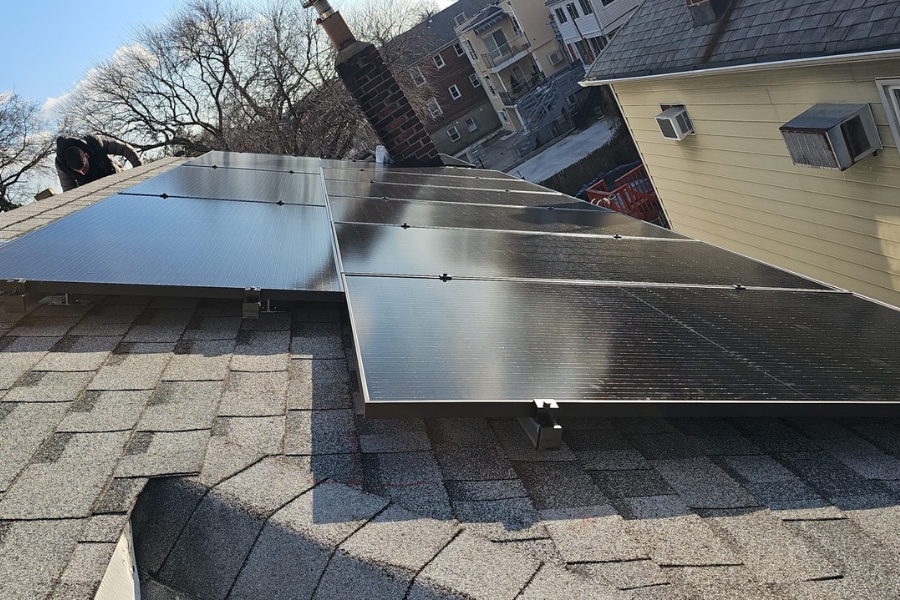With all the high-rises in New York and more people looking to maximize their savings with solar energy, the industry has introduced a new concept: balcony solar. While it’s not the ultimate solution compared to installing solar panels in New York, it’s sparking real conversations about how city dwellers can take their small, meaningful steps toward sustainability.
Let’s have a conversation about balcony solar and how it could be beneficial in states like New York.
Is Balcony Solar Worth It?
In countries like Germany and the Netherlands, balcony solar (also known as plug-and-play solar panels) has become a popular way for renters and apartment residents to generate their own electricity. Because energy prices are high in Europe, many people don’t have access to rooftops or long-term control over their living spaces. Therefore, even a small system can make a noticeable dent in monthly bills.
The Difference Between Europe and America
But in North America, the math is a bit different. Electricity rates in New York are moderate compared to Europe, and most apartment buildings don’t yet have policies that support individual energy generation. Plus, the amount of power a balcony solar setup can produce is limited. It’s just enough to run a few lights or charge devices, not power your AC or oven.
That doesn’t mean it’s useless. For eco-conscious renters who want to take action now, it could be a step in the right direction. But if your goal is big savings or energy independence, larger solutions like community solar programs or waiting for building-wide upgrades might be more effective in solving your energy dilemma!

How Does Balcony Solar Work?
Setting up balcony solar is normally DIY. You get one or two panels, a small inverter, and a cable that plugs right into a normal outdoor outlet.
Like regular solar panels, when sunlight hits the panel, it creates electricity. The inverter changes that into a bit of energy your apartment can use, and when you plug it in, the power flows directly into your home’s circuit, offsetting the nonrenewable energy that you pull from the grid.
One of the biggest differences with balcony solar is that it doesn’t come with batteries. You can’t store extra energy unless you add a battery, which makes things more complicated and expensive. If you’re not using any of the energy, the system shuts off for safety, so it’s not producing more than needed.
Is Balcony Solar Legal in New York?
This is where things get tricky. As of now, there’s no citywide ban on balcony solar, but there are rules that could stop you from using it.
New York City’s electrical code requires any device that feeds power into your home’s wiring to be inspected and permitted. That means simply plugging a solar panel into an outlet, even if it’s safe, might not be up to code unless it’s approved and registered.
Also, your building might have restrictions on anything attached to the exterior, including rail-mounted panels (common with balcony solar). Some landlords worry about liability, damage, or aesthetics, so you’d have to check for yourself to see if it’s allowed with your building’s management.
That said, the state is constantly improving its solar policies and incentives. Programs like Local Law 97 are pushing buildings to cut emissions, and there’s growing interest in ways regular residents can contribute. So while balcony solar isn’t widely adopted yet, it could become more accepted as rules change.

H2: Are Plug-and-Play Solar Panels Beneficial?
Short answer: yes, but with limits.
Plug-and-play solar panel systems are great for people who rent, can’t modify their roof, or want a quick way to start using clean energy. They’re portable, easy to set up, and don’t require construction.
They’re also great to use as an educational tool. For students, families, or anyone curious about how solar works, having a small system on the balcony can be a hands-on way to learn.
But they won’t drastically lower your electric bill. Most systems produce between 300 to 800 watts. And because they’re small, they’re less efficient than larger setups that cover more surface area. Still, if you’re passionate about reducing your carbon footprint in a small way, this could be a fun step in the right direction.

What’s The Difference Between Balcony Solar and Rooftop Solar?
Here’s a chart to compare balcony solar with a normal solar panel system.
| Size & Scale | Small (~ 3.5 by 5.5 ft) | Large (multiple panels) |
| Power Output | Low, powers a few devices or lights | High, can power a full apartment or building |
| Who It Serves | One household or renter | Entire building or multiple units |
| Installation Type | Temporary, portable, no construction needed | Permanent, professionally installed |
| Setup Process | Simple, often plug-and-play | Requires permits, inspections, and planning |
| Energy Impact | Minimal | Major |
| Best For | Renters, people without roof access | Co-ops, condos, homeowners with roof rights |
| NYC-Friendly? | Possible, but may not meet current electrical code | Growing in popularity, supported by city incentives |
| Long-Term Value | Low cost, low impact | Higher upfront cost, big savings and eco benefits |
| User Control | Full control for individuals | Shared or building-managed system |
Thinking Big, Starting Small
Balcony solar is definitely not a magic fix, but it’s a sign that people are interested in solar, which is an incentive to keep innovating and coming up with more ways to switch to renewable energy. In New York, where apartments dominate and energy rules are strict, it’s still early days. But as technology improves and policies adapt, we might see these compact systems become a common sight on city balconies.
